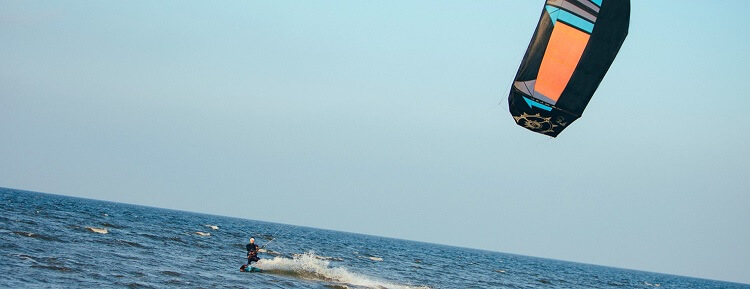
We have collected a lot of useful information about Kiteboard Falling Behind Kite. The links below you will find everything there is to know about Kiteboard Falling Behind Kite on the Internet. Also on our site you will find a lot of other information about kitesurfing, wakeboarding, SUP and the like.
14 Essential Tips for Learning Directional Board Kitesurfing
- https://www.kitesurfist.com/directional-board-kitesurfing/
- A high-volume surfboard, meanwhile, can probably lift you (or nearly so) even when still. As a result, too much kite will give too much power and pull you overboard. Note that riders who use straps on a directional kiteboard are able to get away with too much kite power since their feet stay attached to the surfboard even when pulled hard.
How to turn: changing direction when kiteboarding ...
- https://knowledge.thekitespot.com/how-to-turn-when-kiteboarding/
- Timing of kite and board – aim to synchronise the movement of your kite towards 12 and turning the kiteboard upwind. Rotate upwind to point downwind. If you don’t turn the board far enough into the wind as you slow down, the board won’t be pointing enough downwind when you dive the kite …
Kiteboarding - Wikipedia
- https://en.wikipedia.org/wiki/Kitesurfing
- Kiteboarding, also known as kitesurfing, is an action sport combining aspects of wakeboarding, snowboarding, windsurfing, surfing, paragliding, skateboarding and sailing into one extreme sport.A kiteboarder harnesses the power of the wind with a large controllable power kite to be propelled across the water, land, or snow.. Compared to the other sailing sports, kiteboarding is both among the ...
Hood River Gorge & Lyle Kiteboarding Guide
- https://www.comekitewithus.com/hood-river-lyle-gorge-guide.html
- Once your kite is launched, quickly head into the water with your kite at 10 or 2 O'clock to avoid getting lofted. Be aware that kites can fall out of the sky between gusts, so be ready to eject or save the kite from falling on beach goers or other kiters.
Kite launching and landing - KiteBOARDschool.nl
- https://kiteboardschool.nl/en/theory-kitesurfing/kite-launching/
- Sep 21, 2017 · Particularly when the wind is gusty, keeping the kite at 12 o’clock increases the risk of back stalling (kite falling in front of you) or front stalling (kite falling behind you. When a kite stalls it can make lines fo slack. If the kite then catches wind again, you may get pulled hard onto the sand.4.8/5(130)
Foilboarding Beginner's Guide - Kitesurfing Magazine
- https://kitesurfingmag.com/foilboarding-beginners-guide/
- Aug 26, 2015 · What kite size? If the winds are around nine knots or less I recommend an 11 meter-to-15 meter kite. Depending on your size. You can ride the big kites like 17 meter or 18 meter, but you have to be ready when you get up and you’ll be full-powered. On an average day with less than nin knots I fly my 11 meter Cabrinha Velocity.
What is the difference between kiteboarding and kitesurfing?
- https://www.surfertoday.com/kiteboarding/what-is-the-difference-between-kiteboarding-and-kitesurfing
- Some argue that a kite is a sail, or wing, that uses the power of the wind to propel the participant across the water. For them, kiteboarding is a sailing or wind sport, similar to windsurfing. If we look at the technical aspects of the kite ride, we'll find several characteristics featured in sailing: upwind and downwind navigation, tacking ...
Basics - Kitesurfing Handbook
- http://kitesurfing-handbook.peterskiteboarding.com/progression/the-basics
- Once the kite is pumped hard, place it with the leading edge (the blown up spar that spans the length of the kite) face down into the sand. You should have your kite aligned with the oncoming wind - ie. if you stand at the spot where you pumped up the kite, the wind should be coming from directly behind you.
Kiteboarding Kitesurfing
- https://www.kiteboarding.com/
- Duotone Rebel - Kiteboarding.com review on the Duotone Rebel for Big Air: The most versatile kite in the Big air catagory, the Rebel is a great choice for anyone looking for a kite that excells at Big Air but is still a great kite for all around riding. With it's 5 strut design, The Rebel is …
How to Choose the Best Kite for Big Air
- https://www.kitesurfist.com/best-kite-for-big-air/
- Then, before landing, send your kite forward by pressing the bar with your front hand, so the kite has enough forward momentum on landing to keep you from falling vertically. Land in your chosen landing area with your board headed fully downwind and flat on the water – do not edge right away, first take the time to recover your balance and speed.
We hope you found Kiteboard Falling Behind Kite info you were searching for.
Kiteboarding is a wonderful sport and a fun pastime. Find all the information you need on our website and get started!